Features of kitchen redevelopment
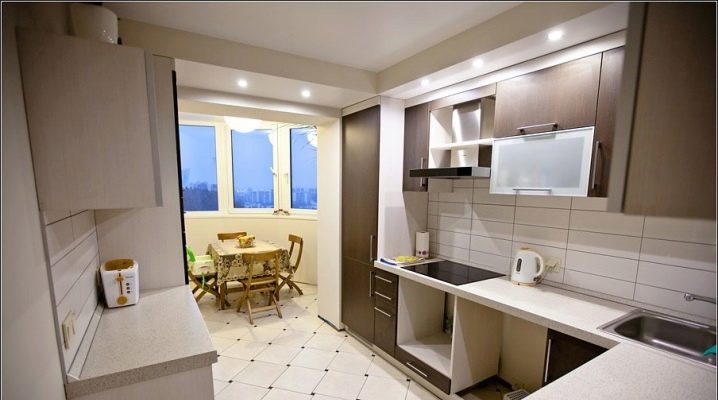
Changing the architectural plan of a dwelling means radically changing its appearance, giving it a different face. And the most popular idea for redeveloping an apartment today is the option of combining a room with a kitchen.
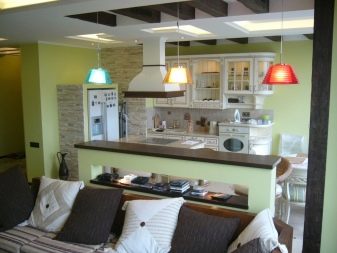

Peculiarities
There is no doubt that combining a gasified kitchen and one more room is an indisputable advantage.
The disadvantage is that redevelopment, in the event of the demolition of any wall, will necessarily require permission from the relevant authorities.
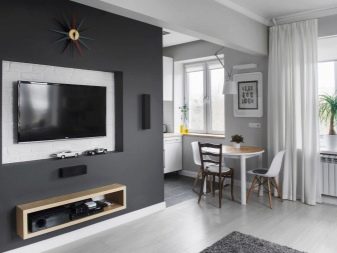
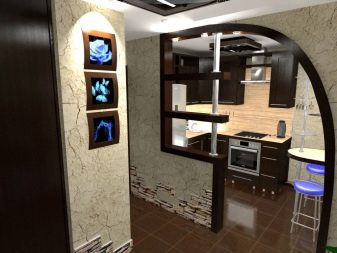
It is not uncommon that, despite the wishes of the owners, such permission cannot be obtained.
- A one-room apartment does not allow this, since there is not a single room left for housing (the kitchen is a place for cooking and eating food, but not a living room).
- Almost all walls in many types of multi-storey buildings perform the functions of load-bearing ones, even partitions between rooms are considered as such, and the load-bearing wall cannot be demolished, since this poses a threat to the entire building.
- According to fire safety requirements, it is forbidden to combine gasified kitchens with living rooms. The only solution that can be agreed with the authorities is the installation of sliding partitions or doors.
- In the presence of an electric stove, and not a gas one, it is possible to agree on such an option as making an arch or an opening in the wall, even if it is load-bearing. This can be done, since there will be no complete destruction of the supporting structures. But, on the other hand, such an opportunity may be denied if such a redevelopment was carried out earlier by other homeowners, that is, the house is already at some risk of collapse.
- The advantage of the walls of the panel "Khrushchev" (project series 1-506) has always been the presence of relatively light partitions that do not perform load-bearing functions. It is relatively easy to obtain permission to demolish such a partition. But if it is planned to completely remove the interior wall of the "brezhnevka" (projects of the 111-90, 111-97, 111-121 series, and projects of brick buildings of the 114-85, 114-86 series), then this is unlikely to be feasible due to bearing functions of these walls. The way out can be found by installing only the doorway instead of completely removing the wall.
- In some panels, walls / partitions are not allowed to be removed at all, which is associated with the age of the house, the condition of the walls or a large number of redevelopments already made.

In other cases, there are always nuances that can interfere and help in redevelopment. It all depends on the specific situation.
Redevelopment, in any case, must be formalized accordingly. It is necessary to consult with the city administration and other authorities before starting any work. Only they can get permission for them. Illegal merger work will certainly bring problems, and for this reason, you need to approach the paperwork with the utmost seriousness.
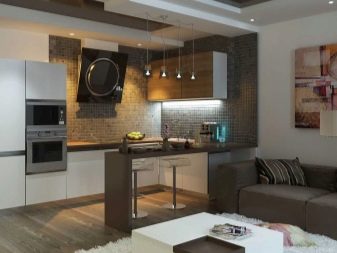

How to combine?
There are several ways to increase the space by demolishing or transforming the wall.
- Completely demolish the wall that separates the room and the kitchen. This is acceptable if the apartment consists of more than one room and a kitchen, and the kitchen wall is not load-bearing. A prerequisite is that the gas stove must be absent.
- Partially demolish the partition separating the kitchen and the room. It is also assumed that there is no gas stove (the presence of an electric stove is allowed), but this path can be realized on a small footage. In this way, one-room apartments are often converted.
- Install a sliding partition or door. Suitable in the presence of a gas stove, and this way is practically the only one in the presence of one.
- Install the arch instead of the door. It is possible to make an arched opening even in a load-bearing wall, but when obtaining the appropriate permission, difficulties usually arise.
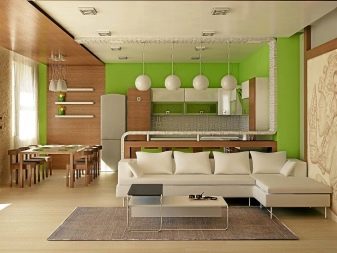
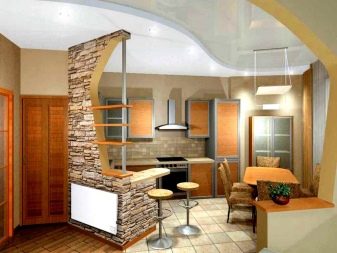
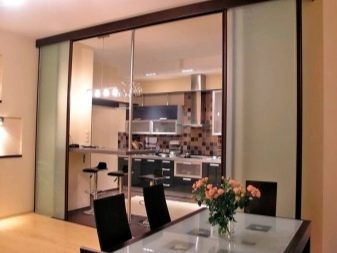
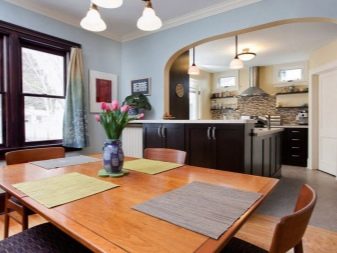
Redevelopment of the housing area after combining the room with the kitchen gives the owners undoubted advantages:
- the useful area increases, since a rather large space is occupied by the wall itself (with a thickness of about 100 mm and its length of 4000 mm, it takes up quite a lot);
- housing acquires additional options for placing furniture;
- the apartment becomes visually more spacious;
- the volume and price of finishing materials during repairs are reduced.
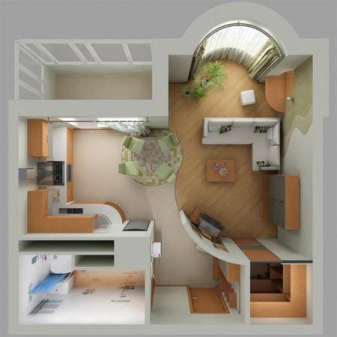
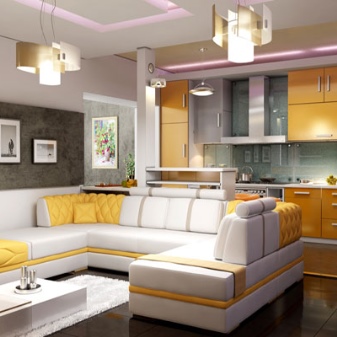
In addition to the fact that you can demolish the wall, there are a number of options for increasing the usable area of the apartment.
- Relocation and expansion of the kitchen by reducing the living area of the apartment. Current building codes do not allow kitchens and bathrooms (so-called wet areas) to be placed above living rooms in apartment buildings. This means that, in accordance with these SNiPs, it is possible to transfer and place the kitchen on the site of the former living room, for example, only if there are rooms under them that are not used for housing.
Another possibility is "partial transfer": the stove and sink will still be in the kitchen combined with the room (in its non-residential part), and the rest of the furniture (freezer, table, etc.) will be transferred to other places, which will give visual enlargement of the kitchen.
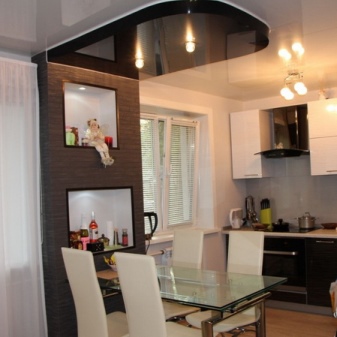
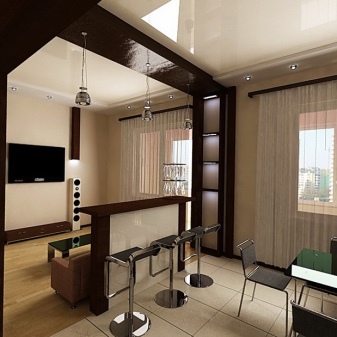
- Relocation and expansion of the kitchen area, reducing the non-living area. SNiPs are forbidden to place the kitchen in place of the bathroom, to increase its area by reducing the bathroom, to place the bathroom door in the kitchen. If a gas stove is used in the apartment, it is not allowed to enter the kitchen only from the living room.
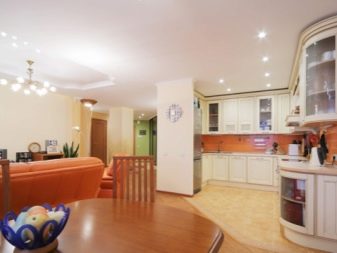
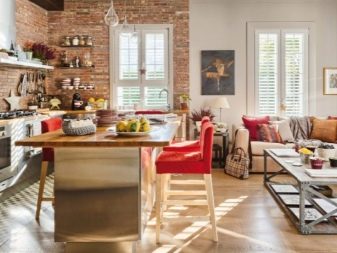
- It is allowed to increase the area of the kitchen by attaching a corridor, an entrance hall or a storage room to it. It is possible to organize the so-called kitchen-niche by completely transferring it to the corridor, but this is possible only if the apartment is not supplied with gas. Placing a kitchen in the area of a bathroom (and vice versa) is prohibited by SNiPs, since this formally worsens living conditions. SNiPs regulate the same in the case of an increase in living space, reducing the kitchen.
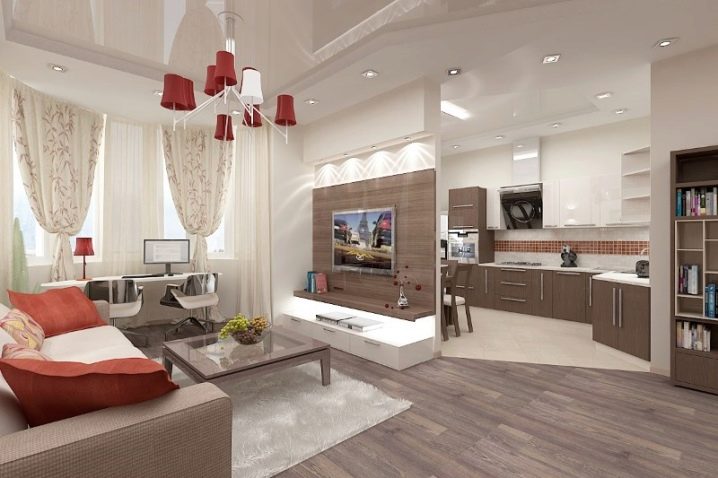
Such a redevelopment, in principle, is possible, but only with the consent of the owner of the living space certified by a notary.
- The layout of combining the kitchen with a balcony or loggia area. This connection option is possible, but provided that it does not affect any load-bearing wall and part of the wall that is located under the window sill (it holds part of the balcony slab). With such a redevelopment, the window frame and door block are often removed, a bar counter is made from the window sill block, and the outer part of the balcony / loggia is insulated. It should also be remembered that SNiPs prohibit the transfer of heating radiators from the inside of the apartment to the outside (to the balcony / loggia).
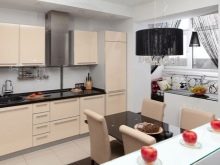
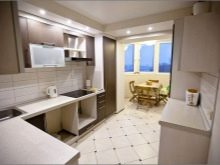
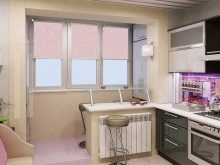
- Removing or reducing the section of the ventilation duct. Ventilation shafts are a common property of the house, for this reason SNiPs do not allow any changes in their design.
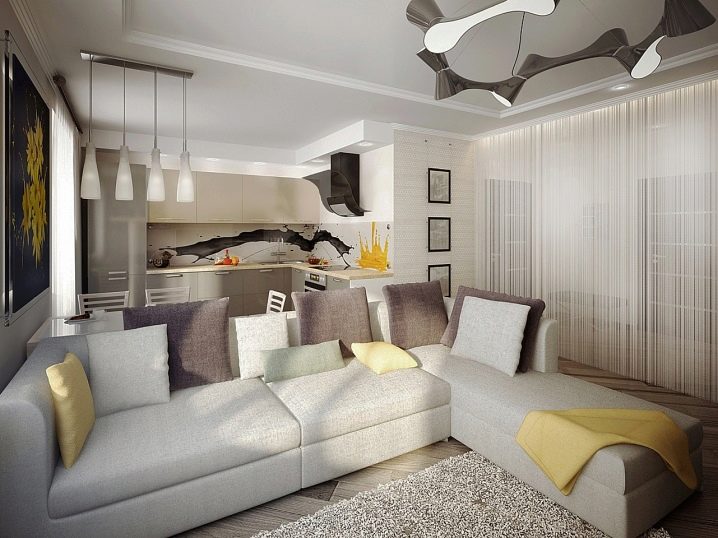
- Transfer of sinks, stoves and utilities. Carrying out the sink outside the "wet zone" is not allowed, in contrast to moving it along the wall. If there is an obstacle on the side of the heating battery, it may be moved, but only after obtaining permission.


If you have a problem of choosing from a variety of redevelopment options, or simply with a lack of planning experience, you can always consult with specialists in this area.
As practice shows, all conciliation documentation can be drawn up with minimal loss of time, and professional designers will develop a computer three-dimensional model that will give the customer a correct idea of the future appearance of the apartment.


For even more information on redeveloping a kitchen and combining it with a room, see the video below.













The comment was sent successfully.